
The Moroccan Food Forest That Inspired an Agricultural Revolution
These ancient forest gardens may be more relevant than ever.
It was 1975 and Geoff Lawton was wintering with friends in Morocco. Camping on beaches north of Agadir, they’d been surfing for weeks when locals told them about Paradise Valley. Located along the Tamraght River in the High Atlas Mountains, it promised 5,200-foot vistas, blue-green waterfalls, and lush, rainforest-like vegetation.
Lawton, then 21, was on his first trip outside the U.K. “Tourists had yet to ‘discover’ the area, so the culture was very much preserved,” he says. “For me, it was like going back to Biblical times.”
The dirt road to the Valley climbed through a barren, arid landscape into rural hills studded with mud brick homes. Twenty kilometers in, the group stopped at the tiny village of Inraren for directions. Lawton went to relieve himself in a roadside wood.
“I remember thinking it was odd that this lush, green forest should be bursting from the desert,” he says.
Stepping inside, things got stranger. The air felt cool, almost misty. Growing in the shade of tall date palms were trees, vines, and shrubs bearing bananas, tamarinds, oranges, figs, guavas, pomegranates, lemons, limes, mulberries, carobs, quince, grapes, and other fruits and nuts. Following a footpath through the grassy understory past groves of olive and argan trees, Lawton discovered a cluster of fenced-in vegetable and herb gardens—most about a quarter-acre in size. Here and there, goats were tethered to posts. Chickens clucked through the underbrush and roosted in trees. Gazing down a leafy corridor, he spotted a man leading a donkey. Its saddlebags brimmed with produce.
“I felt like I’d wandered into some kind of ancient organism,” says Lawton. “I had goosebumps all over.”
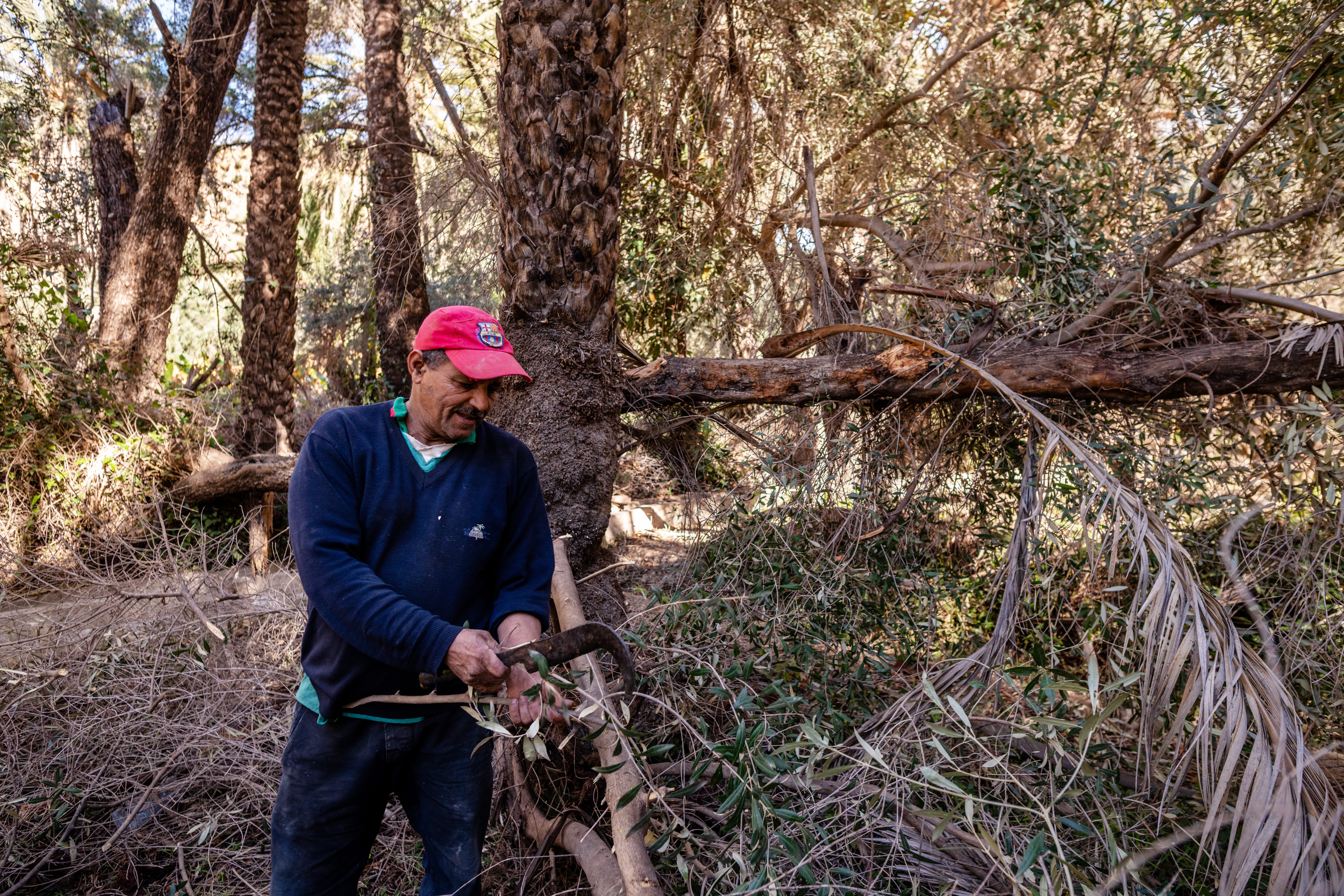
Totaling about 65 acres, the food forest was a remnant of one of the world’s oldest sustainable systems of agriculture. While its origins have been lost to history, scientists agree it is at least many centuries old. Some, including Lawton, date its establishment to 2,000 years ago. When asked about the forest’s age, villagers shrug.
“I have no idea how old it is or when our ancestors first began gardening here,” says 45-year-old Abdelmajid Ziyani, a construction worker and member of a local argan and olive oil cooperative. “But I know it has been here for centuries.”
“It is really old,” adds 28-year-old Brahim Jidi, with a laugh. He works as a waiter in a local hotel and gardens in the forest as a hobby. He says he grew up hearing stories about his “grand- grand-grandfather” helping tend the forest.
In the 1970s, the communal space was “farmed” by about 800 villagers. Fed by underground springs and shaped by human hands since time immemorial, it was the image of a true oasis. The system remains in use today.
Now 65, Lawton describes his experience at Inraren as life changing, and he has spent a career growing food forests and advocating for their importance as a solution to climate change and other environmental ills. But back in 1975, his friends were threatening to leave him in the woods. Snagging a few oranges, he split. By the time the group reached Paradise Valley, the forest seemed like ancient news.
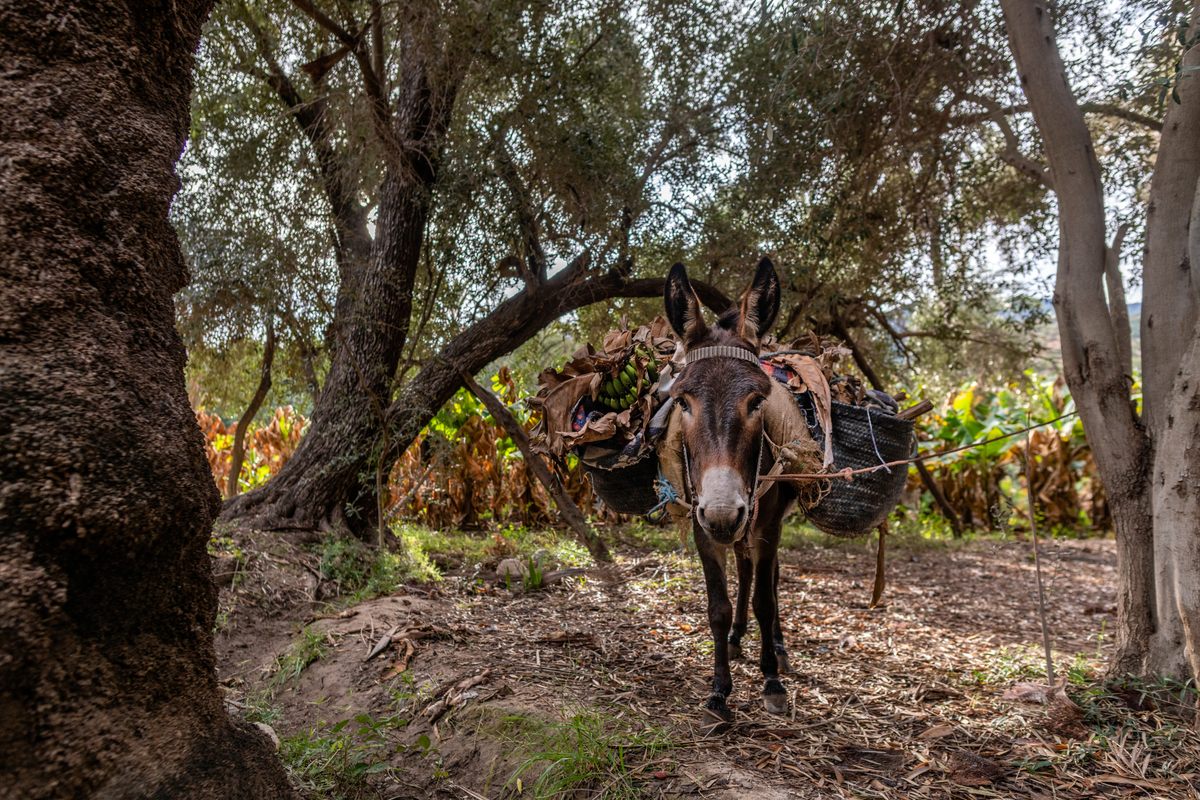
Before modernization, food forests were a staple of indigenous communities in Africa, the Middle East, South Asia, and beyond. Though most have vanished, vestiges have been identified in places as diverse as Tanzania, southern India, Indonesia, the Amazon Rainforest, Central America, and the Caribbean islands.
“This method of agriculture was used throughout the world, but particularly in tropical regions, where multi-species food forests were once the dominant method of production,” says John F. Munsell, Virginia Tech professor of agroforestry and co-author of 2018’s The Community Food Forest Handbook. Though little is known about their early history and adaption, Munsell says forest gardens began with villagers seeking to make their lives easier.
“They settled inside or along forest edges and relied on them for food,” he says. “Naturally, they started managing and altering the environment to their advantage.”
Useful plants were cultivated. Those that weren’t got weaned out. As space opened up, new species were added.
“Say you find bananas growing a mile away,” says Munsell. “That’s great. But it takes time and energy to harvest those resources. Planting them in your backyard is infinitely more convenient.” If you apply that thinking across centuries, “the region’s indigent edible plants became aggregated in one spot.”
Villagers mimicked natural relationships and planted certain species closer to others. Trade introduced non-native plants. Trial-and-error brought horticultural knowledge. Techniques were passed down and steadily improved.
In time, conditions supporting helpful or edible bugs were encouraged. Ditto for mushrooms and medicinal herbs. Gardens came to include plants and nuts that fed livestock such as pigs or goats. Waterways were diverted and rainwater impoundments installed. Domesticated birds including chickens, guineas, and pheasants ate unwanted insects. Restricted to given areas, goats cleared brush. Pigs rooted in the soil, preparing it for planting. The animals’ manure served as fertilizer.
“The goal was effectively to create an agricultural ecosystem that was as self-sustaining as possible,” says Munsell. As a result, advanced region-specific methodologies emerged.
Lawton points to Inraren as an example. Its overstory of date palms has at least four purposes. Thriving in harsh environments, the trees provide bounteous shade and, when planted close together, have a cooling effect. Tall, limbless trunks give other plants space to grow and serve as trellises for epiphytes and vines. Long taproots retrieve water hidden deep in the soil. Fruit provides tasty sustenance.
“The palms shield sensitive species with shorter root systems from the sun and help them access the moisture they need to survive,” says Lawton. Through the process of transpiration, the latter raise interior humidity levels, bringing further cooling effects. Dead leaves and plant matter build the soil, enabling it to retain more moisture. Combined, these factors produce a haven for grassy plants, herbs, and vegetables—all without the help of industrial irrigation, chemical fertilizers, pesticides, or mechanization.
“Unlike modern commercial farming practices, the goal isn’t to maximize the output of a single staple crop,” says Lawton. “Instead, farmers focus on the yield of the overall system. The goal is to provide their families with a year-round food supply as rich as it is diverse.”
As the ecosystem matured, it became more and more self-sustaining. Farmers were able to focus their energies on enlargement, additions, or other tasks. In places like the Amazon, Munsell says experts now believe the techniques were so successful that they produced tracts of managed forest spanning thousands of square miles. Unfortunately, colonization, modernization, and rampant logging have left scant traces of their existence.

It’s unlikely indigenous farmers referred to such gardens as food forests. In fact, the term didn’t exist until the early 1980s, when it was coined by English horticulturalist Robert Hart.
In a book titled Forests and Food: Addressing Hunger and Nutrition Across Sustainable Landscapes, Bhaskar Vira, who directs the University of Cambridge Conservation Research Institute, identifies a variety of historical appellations. Translated, the names range from simply “home gardens” in Zambia, Nepal, and Kerala, India, to “forest gardens” in Sri Lanka, “the gardens of complete design” in Java, and Mexico’s “family orchards.”
According to Vira, it wasn’t until Western anthropologists began studying indigenous agricultural practices in the early 20th century that scholars took note of the gardens. Even then, reports remained largely obscure.
“In all but the most rural and isolated places, forest gardens were eradicated in favor of commercial, monocultural production techniques,” says Munsell. Before Europeans colonized the Caribbean, for example, food forests were likely the primary method of agriculture. Sugarcane production would have wiped them out entirely, “but a few plantation owners noted the systems’ ability to cheaply feed their workforce and allotted resources to maintain them.”
Agronomists didn’t recognize forest gardening as a viable “technology” until the late 1960s.
Facing global adaptation of Green Revolution farming practices—which advocated monocultures, mass application of artificial fertilizers and pesticides, mechanized production techniques reliant on fossil fuels, and genetically engineered crops—Indian agronomist P.K. Nair helped pioneer a new field of agricultural science: agroforestry. A native of Kerala, he’d grown up tending forest gardens. Studying agronomy in Germany and England, he came to appreciate the method as a means of increasing food security in space-limited locations or developing countries.
“He was the first to conduct serious scientific research with the goal of developing a systemic, adaptable approach for improving forest gardens,” says Munsell. Nair co-founded the World Agroforestry Center in Kenya in 1978. Accepting a position at the University of Florida in the early-1980s, he worked to establish the field as a component of U.S. agricultural programs. For many of today’s agricultural students, agroforestry is required learning. “He’s basically the father of food forests being taught in academia,” says Munsell. “Without him, my title would likely be very different.”

Inspired by Nair, the 1970s OPEC oil embargo, and emerging scientific consensus connecting carbon emissions with climate change, horticulturalists such as Hart began adapting and experimenting with forest gardening techniques. University of Tasmania bio-geography professor Bill Mollison upped the ante when he co-authored a radical treatise on agriculture, Permaculture One: A Perennial Agriculture for Human Settlements in 1978.
Like Nair, Mollison advocated for a system of sustainable, perennial-reliant agriculture that would sequester carbon and offer an eco-conscious alternative to Green Revolution technologies—i.e., forest gardening. As with agroforestry, his methods involved “the intentional combination of agriculture and forestry to create integrated and sustainable land-use systems.”
The idea was to capitalize on the benefits of integrating useful trees, shrubs and, vines with crops and livestock. In the process, problems like mass erosion, desertification, deforestation, irrigation-induced water shortages, pollution from unchecked storm runoff, and rampant carbon emissions could be curbed dramatically.
Warning of impending environmental catastrophe, Mollison called for permaculture to be adapted en masse. Toward that end, he established a central non-profit credentialing institution to train agronomist-farmers. In turn, he hoped they would disseminate practical techniques throughout the world and found regional sister institutions.
“Bill wanted to shift the paradigm of food-production away from clearing forests to make room for fields of artificially supported corn and soybeans, or boundless pastures for cattle,” says Lawton. In short, he wanted to use the techniques that built Inraren’s food forest centuries or even millennia ago to help address climate change and other environmental ills. In 1981, his efforts netted Mollison a Right Livelihood Award, also known as The Swedish Nobel.
Combined, Nair and Mollison paved the way for a global food forest revival. But it was Geoff Lawton that succeeded in bringing the idea to the mainstream.
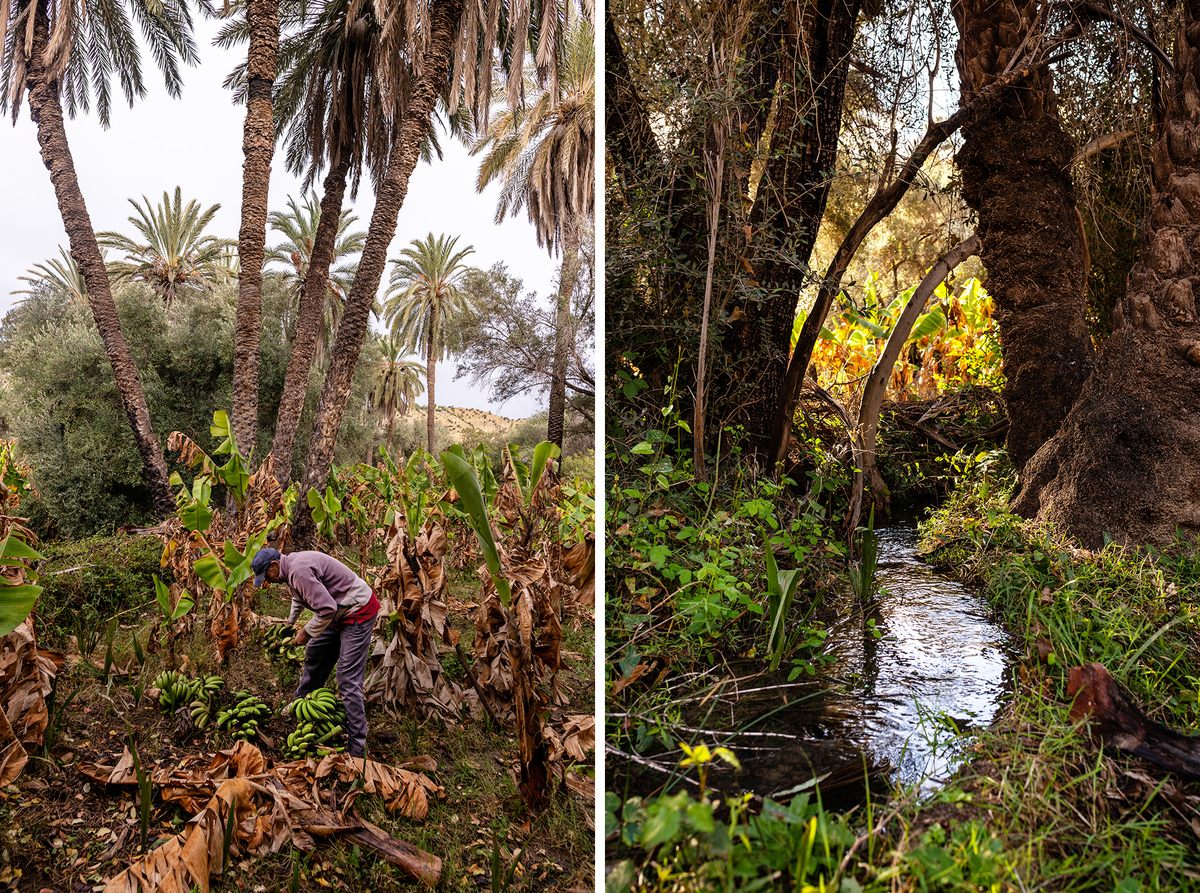
By 1979, Lawton was running a contract cleaning business in Australia. A girlfriend told him about Mollison, who was then launching the first Permaculture Institute. Struck by the book’s name, Lawton read Permaculture One. With a degree in engineering, he was impressed by its scientific approach.
“And when I realized he was writing about what I’d seen in Morocco, man, that hit me like a bolt of lightning,” says Lawton. The forest had stayed in the back of his mind for years. “It felt kind of, well, fated.”
Within a year, Lawton was attending classes at Mollison’s institute. By 1985, he was a certified instructor of permaculture buying 30 acres of land in rural Australia. There, he made history.
“Everyone was talking about establishing these food forests, but nobody had done anything really substantial,” says Lawton. As he worked as a consultant on permaculture design projects—essentially a more food-oriented and eco-sensitive approach to landscaping—the lack of visual examples was problematic. Clients were interested, but wanted to see a precedent. “I needed photos showing step-by-step implementation and how these things would look one, five, 10 years in,” says Lawton. “So, I decided to transform my farm into a working model.”
The strategy worked. By the early 1990s, food forest designs began to sell. In 1997, Mollison retired and asked Lawton to assume directorship of the Permaculture Institute. The designation led to worldwide notoriety. Lawton used it to push the envelope and put food forests on the map.
“I thought, ‘What’s the craziest thing we could do with this technology?’” he says. Again, his thoughts returned to Inraren. “The answer was: Establish a food forest in the desert.”
The result was a precursor to Lawton’s ongoing Greening the Desert initiative. Beginning in 1999, the project aimed to establish a food forest demonstration site in Jordan, about two kilometers north of the Dead Sea.
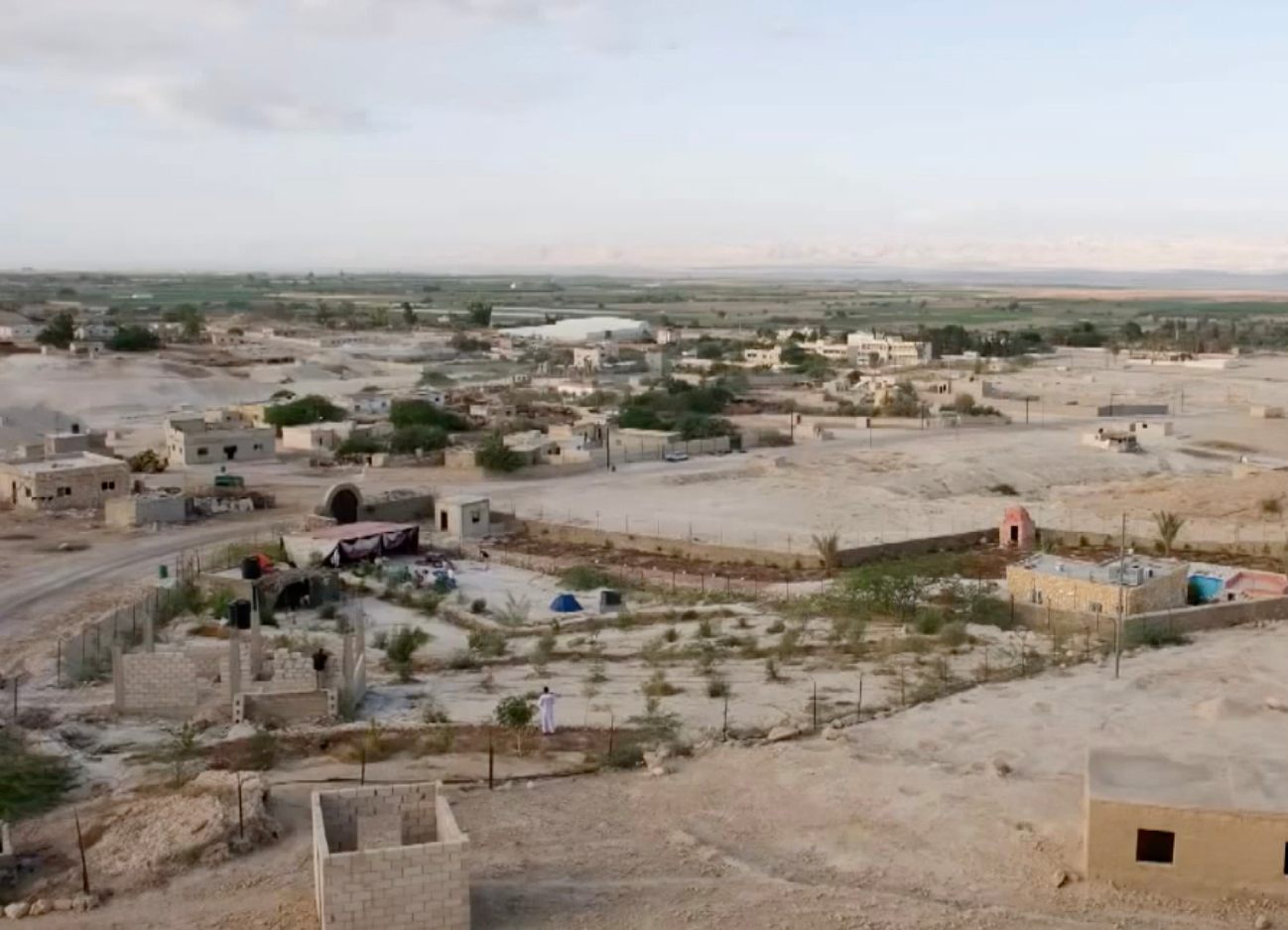
“This was the toughest project I’ve ever worked on,” says Lawton. The site was 400 meters below sea level. Mid-summer temperatures rose to 122 degrees Fahrenheit. Soils were salty. Rainfall averaged less than six inches per year. “Nothing of this nature had ever been attempted,” says Lawton. “The only model I had was Inraren. And what we created basically mirrors that site.”
The before-photos of the area resemble a landscape from Mars. Follow them through the years, though, and you’ll witness the blossoming of an oasis. The resulting media coverage helped reintroduce food forests to the world. More importantly, it proved their viability.
“What Geoff did was take this fantastical, abstract concept and transform it into an achievable reality,” says Jacqueline Cramer, who helped found Seattle’s Beacon Food Forest in 2009. The 1.75-acre plot is open to the public and supported by a partnership with the city. Inside, there are more than 40 species of fruit and nut trees, and, depending on the season, upward of 100 varieties of herbs and vegetables. An additional 5.25 acres are slated for development. Gardening meetings routinely feature more than 100 attendees from surrounding neighborhoods.
Cramer says Lawton’s work made it possible to provide city planners with well-established examples of food forests. “Then there’s the perspective brought by Greening the Desert,” she adds. Screening Lawton’s documentary made “installing an edible forest ecosystem here seem like a piece of cake.”

A tragic irony of food forests is that at the same time that advocates are promoting them as the future of agriculture, historic examples, such as Inraren, are endangered.
In Morocco, increased tourism has brought paved roads, running water, electricity, and better access to produce markets. A taste for costly new amenities and goods has been introduced. Uninterested in a self-subsistent lifestyle, youths are drawn to cities for education and better work. Those who stay have focused on argan oil production and supplementing their income through tourism or other jobs. The shift toward monoculture has disrupted the sensitive forest ecosystem and is beginning to deplete the soil.
“Our ancestors had a deep connection with [this forest]—they used to live from it; they were united,” says Jidi. “But now it’s different. People have other options. They can be doctors or go work in [modern] fields. And we have more expenses. Now, we want expensive shoes, and phones, and internet. Before, [about $20] a month was enough. Now, my kids alone spend [more than $30] each week. You cannot make that much from the forest.”
Still, older residents continue to rely on the forest for much of their food. Nearly everyone sells forest products for extra cash. And gardening plays a central role in village life.
“All of us work here,” says 68-year-old Inraren native Mohamed Ait Dakha, a former tourism director. “It provides almost all of my family’s food. For us, it is sacred … I only hope our [young people] leave, study, make something of themselves, then come back. My wish is that they will be capable of watching over this land.”
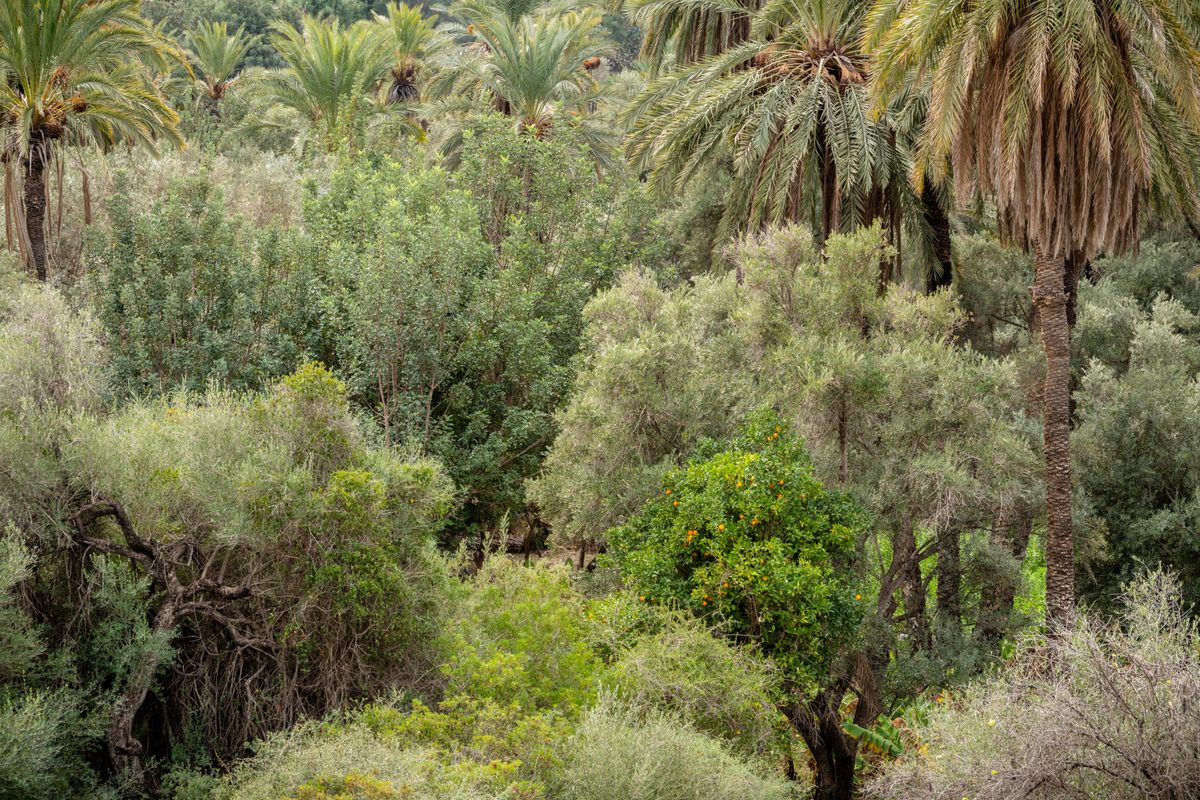
Unfortunately, that might be easier said than done. In various documentaries, Lawton has urged governments to recognize and preserve indigenous forest gardens as natural historical landmarks. Inraren’s story is common: Youths are migrating to cities, and the passing of village elders means the loss of management practices. In time, logging or development may erase old food forests entirely.
Today, food forests are being created throughout the developed world at breakneck pace—as of 2018, more than 70 have been installed in public spaces throughout the U.S. alone. After helping install a food forest in Seattle, Cramer served as a consultant for large-scale food forest projects in cities such as Oakland, Los Angeles, Atlanta, New York, and Philadelphia. Many are in low-income neighborhoods, or amid food deserts, and can provide community programming, urban greenways, and access to better nutrition.
While proponents are enthusiastic about their benefits, those hoping for agroforestry to reform global agriculture are looking beyond the model of Inraren. “The point was never that home forest gardens and small-scale community food forests would somehow magically eradicate world hunger or solve climate change,” says Munsell. Instead, the goal of urban food forests is to cultivate public awareness and change how we think about agriculture.
“To understand the truly limitless potential of these traditional technologies, we need to look deep into the past,” says Lawton. He points to an era when the indigenous techniques that gave rise to permaculture and agroforestry fed some of the world’s largest societies.
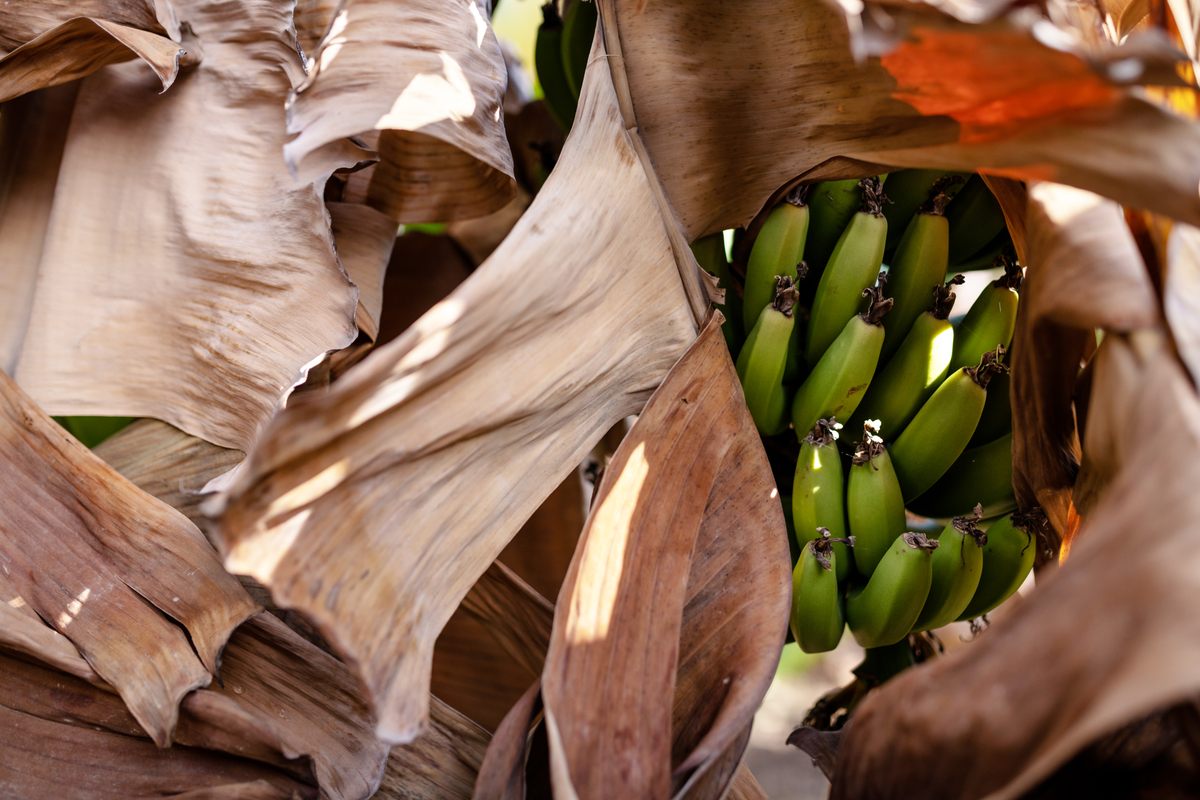
During the decades that Lawton and other advocates spent honing permaculture techniques to create new food forests, historians and geographers looked to old food forests to re-write our understanding of human development and geography.
Today, it is a known fact that “people living in and near forests have, for millennia, been altering forests … to meet their food and nutrition needs,” writes Bhaskar Vira, the Cambridge professor of geography and environmental economics. A prominent example came in the mid-2000s, when paleobotanical research in New Guinea revealed “that people as early as the late Pleistocene (30,000-40,000 years ago) were manipulating the forest by trimming, thinning, and ring-barking in order to increase the natural stands of taro, bananas and yams.”
According to Munsell, early academic advocates of food forests tended to see them as a way to solve food shortages among small or isolated populations in developing countries. In the West, some of the first adopters were homesteaders and communalists who, influenced by the dreams of the Sixties, considered them a means of dropping out of society, being self sufficient, and reforesting small tracts of land. “But now, you have findings that imply forest gardening techniques once supported populations of tens of thousands of people or more,” he says. “And that changes everything.”
The most jaw-dropping example of this revisionist history is the Amazon Rainforest. For decades, the region had been considered a kind of false paradise: Its rich biodiversity obscured the fact that its poor soil could only support small villages. But as Charles C. Mann writes in 1491, anthropologists have more recently argued that the rainforest was home to large, impressive societies. Rather than plant European-style fields of crops, they cultivated orchards, which fed them until the disease and destruction brought by colonization. Eventually the jungle hid these decimated settlements, and Europeans assumed the landscape was pristine wilderness. But as Mann writes, drawing on the work of academics such as William Balée, Amazonians may have modified the environment to the extent that the rainforest is “largely a human artifact.”
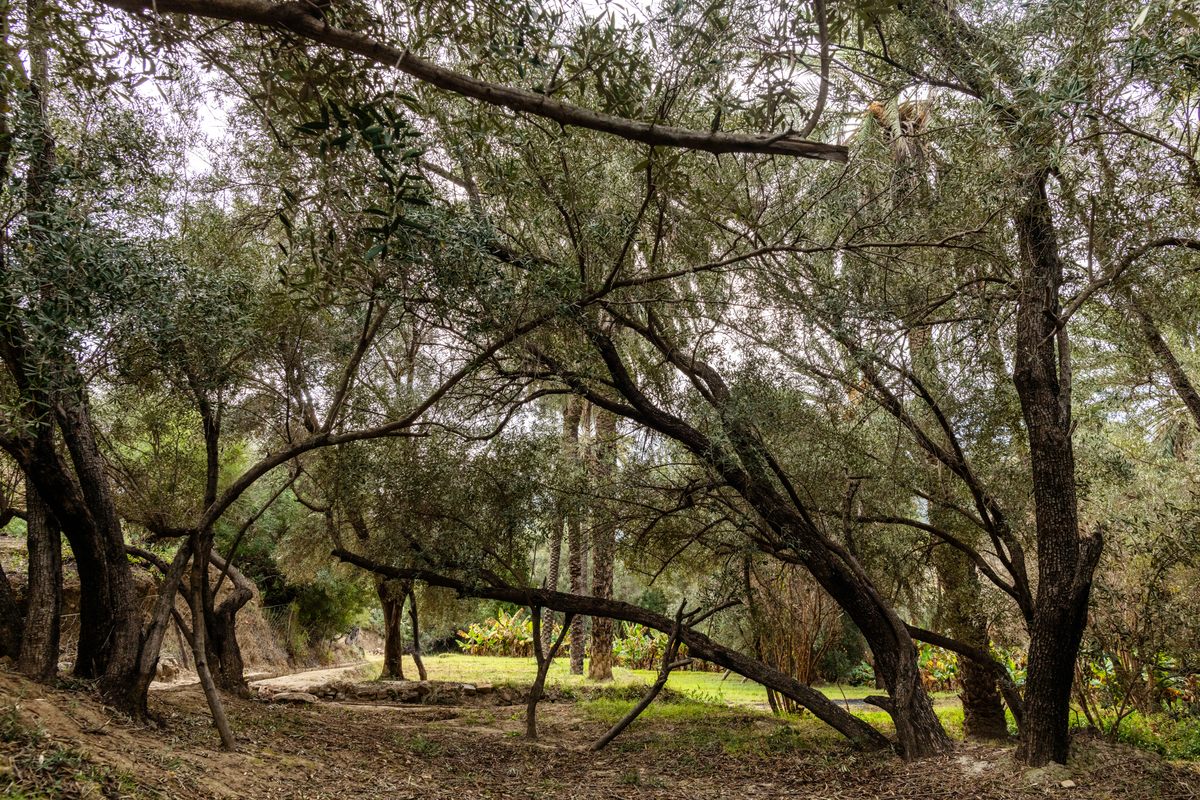
This thesis is bitterly contested by the old and new guard. But it is increasingly accepted, and not just by those studying the Amazon. A theme of Vira’s work is that global agriculture has not just meant cutting down trees to plant fields; it’s equally meant modifying forests—by transplanting seedlings, burning understories, and changing watercourses—so that they evolve into better food systems. Put another way, nearly all of the world’s “pristine” forests show signs of being shaped by the techniques now encapsulated by agroforestry and permaculture.
Munsell, Lawton, and Vira envision a future that, in many ways, emulates this past. In it, agriculture has integrated forest gardening techniques advanced by agroforestry and permaculture.
“On the simplest level, you’re doing things like planting nut trees between rows of corn,” says Munsell. This runs counter to the monocrop perspective, which gauges success by the output of a single crop such as corn. But the trees provide shade and groundcover, lessen inputs such as irrigation and pesticides, and prevent erosion—thereby reducing costs. Meanwhile, they produce salable nuts and provide habitat for beneficial birds and insects. “When you look at these systems as a whole, they’re going to be more productive, more efficient. And that’s before you consider environmental impact, or certifications that could increase crop values.”
“Once upon a time, American farmers planted [nutrient-intensive] cash crops like cotton year in and year out,” says Munsell. “They went on doing that until they depleted the soil and nothing would grow at all. Of course, we now know crop rotation would have maintained the soil. Today, that’s the dominant model.”
Fifty to 100 years from now, he hopes the same will be true for agroforestry. The question is: Will it be too late?
Abdellah Azizi contributed reporting to this article.
Gastro Obscura covers the world’s most wondrous food and drink.
Sign up for our email, delivered twice a week.


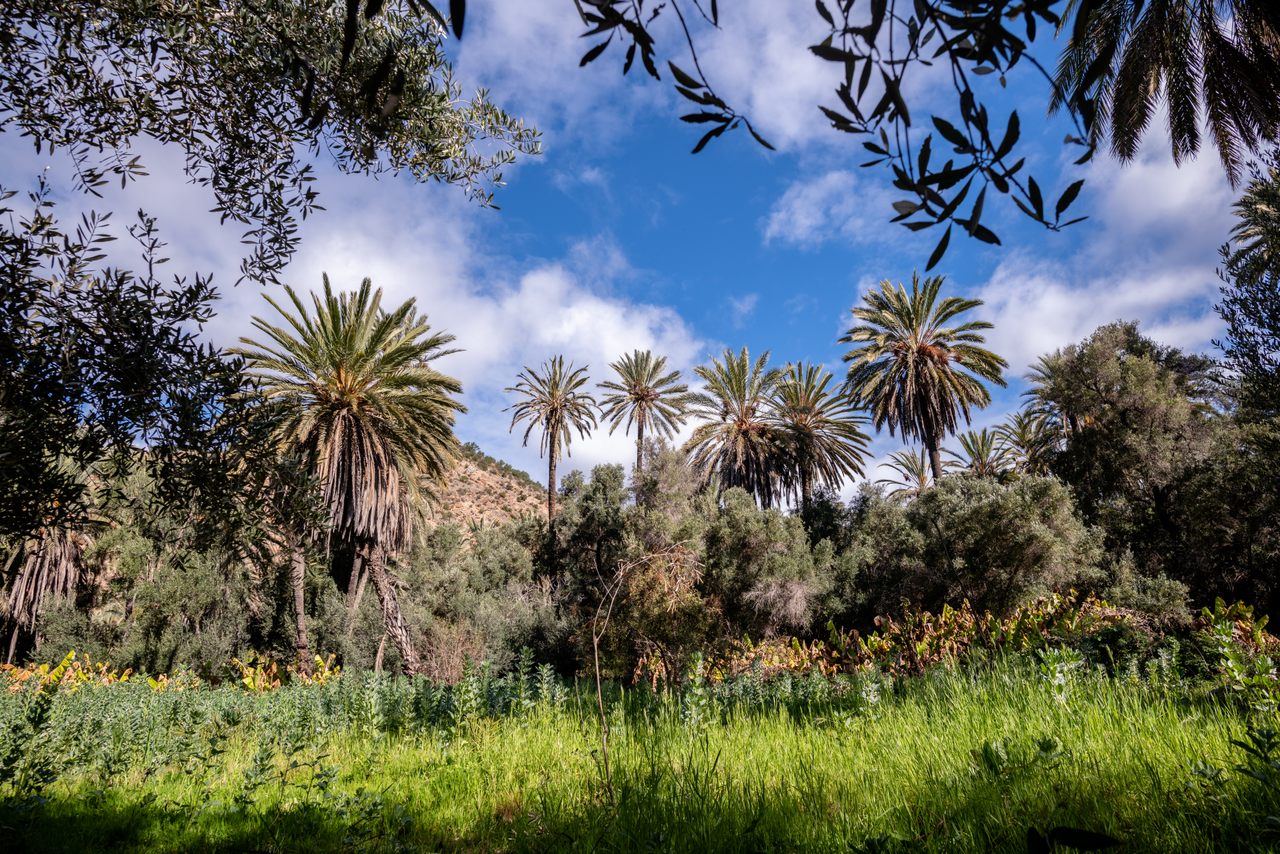


























Follow us on Twitter to get the latest on the world's hidden wonders.
Like us on Facebook to get the latest on the world's hidden wonders.
Follow us on Twitter Like us on Facebook